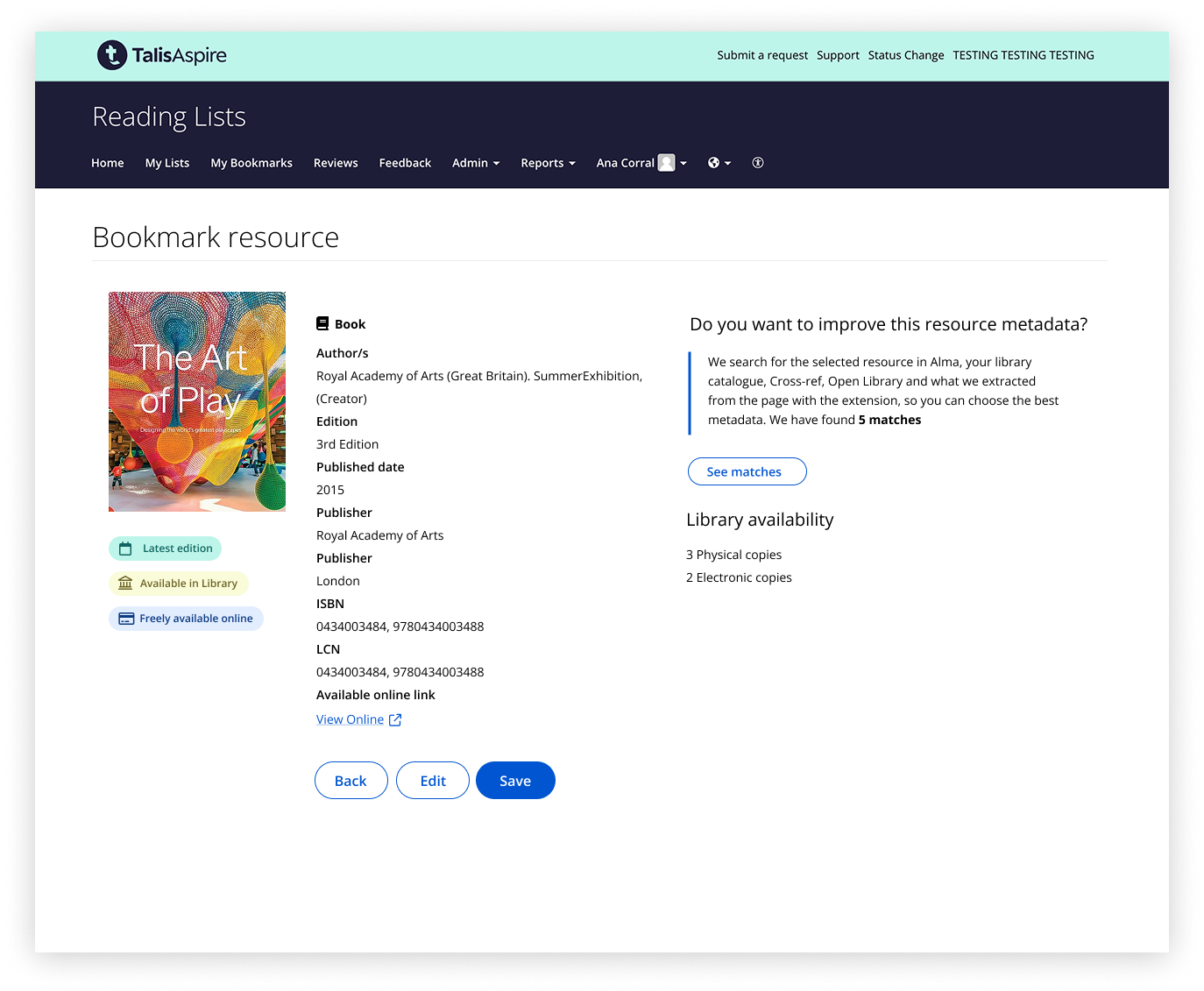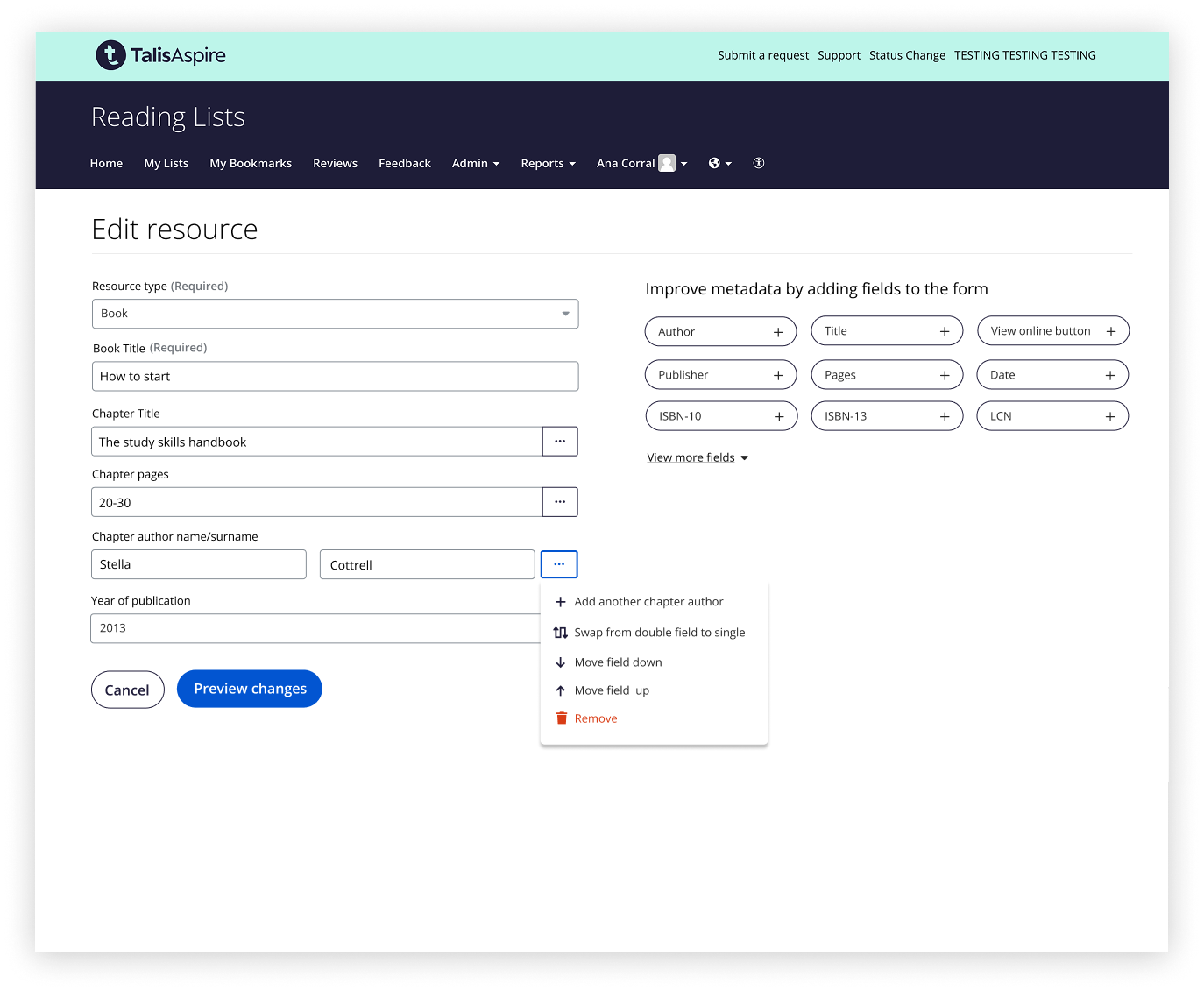Redesigning the bookmarking process
Talis Aspire is one of the main products
I have worked on for the last three years, as part of Technology from Sage.
Product context
Talis Aspire is a SaaS product that helps librarians and academics manage reading lists, while enabling students to easily access and use them. Aspire fully integrates with library systems to streamline course resourcing, copyright compliance, and acquisitions.
The challenges
The bookmarking process, a key way users add resources to their reading lists, hadn’t been updated for several years.
Librarians and academics reported multiple issues:
A long, cluttered form requiring excessive scrolling, leading to missed fields and incorrect metadata.
Outdated UI and poor accessibility compliance.
The review team spent significant time correcting and verifying metadata, slowing down the workflow.
These issues made bookmarking feel cumbersome, inconsistent, and time consuming for both academics and librarians.
The process
I began by reviewing existing user feedback from the ideas pool, prior usability tests, analytics from Pendo and internal data sources. Then I scheduled user interviews to understand and validate the main challenges.
Using a Discovery Canvas, I mapped the challenges, identified stakeholders, and set a clear timeline.
Next, I facilitated a user journey mapping workshop with technical, product, and operations stakeholders to pinpoint pain points at each step.
From there:
I used affinity mapping to group insights and frame them as How Might We… statements.
We ran a prioritisation exercise to focus on the most critical problems.
I led ideation sessions and produced low-fidelity mockups to explore alternative layouts and interactions.
After several iterations, I conducted usability testing sessions with both academics and librarians, testing three prototype variations.
I then synthesised the findings and presented them to the wider team for implementation.
Finally, the development team created an alpha demo, which was tested live with users, allowing for further refinement based on real feedback.
Final Designs and Outcomes
The redesigned bookmarking experience delivered measurable improvements through Pendo and user feedback.
AA-level accessibility compliance achieved through improved colour contrast, form labels, keyboard navigation …
30% less time spent bookmarking resources, thanks to a streamlined form and clearer information hierarchy.
25% reduction in review time for librarians, due to higher-quality metadata at the point of entry.
Improved metadata readability, making missing or incomplete information easier to spot.
A cleaner, modern interface that aligns with the updated Aspire design system and enhances user confidence.
Overall, the new design reduced cognitive load, improved efficiency across user roles, and set a stronger foundation for accessibility and usability standards within Talis Aspire.





